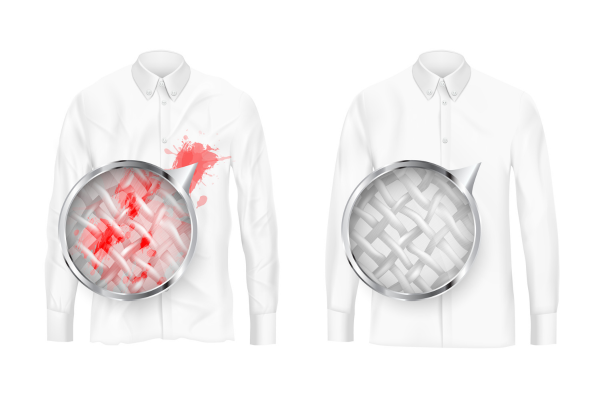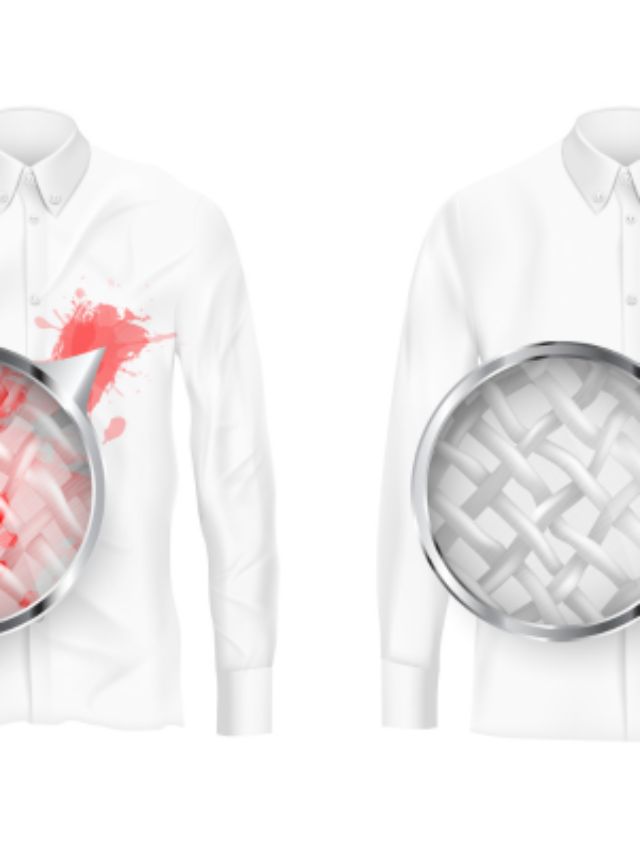How to Remove Stains From Clothes: Stains are an inevitable part of life. Whether it’s a splash of coffee on your favorite shirt, a grease mark from cooking, or a grass stain from outdoor adventures, knowing how to tackle these blemishes can save your wardrobe—and your sanity. This comprehensive guide dives into the science, strategies, and secrets of effective stain removal, offering step-by-step solutions for even the most stubborn marks, including those pesky black-dotted sweat stains that can ruin your favorite outfits.
Table of Contents
Understanding the Basics of Stain Removal
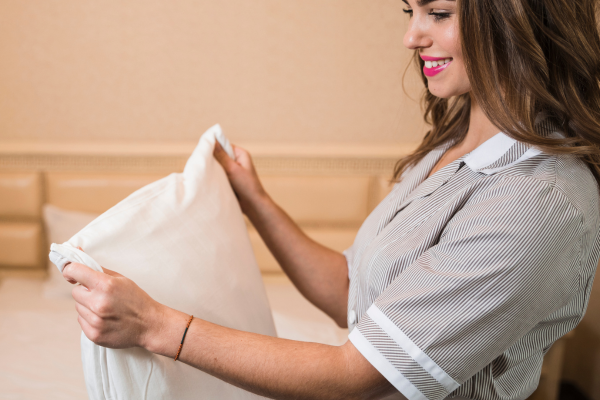
Before diving into specific techniques, it’s crucial to grasp the foundational principles of stain removal. Stains vary in composition, and using the wrong method can set them permanently. Here’s what you need to know:
1. Act Quickly
The sooner you address a stain, the better your chances of removing it. Fresh stains haven’t had time to bond with fabric fibers, making them easier to lift. Keep a stain-removal kit handy (more on this later) for emergencies.
2. Blot, Don’t Rub
Rubbing a stain pushes it deeper into the fabric. Instead, gently blot with a clean cloth or paper towel to absorb excess liquid.
3. Identify the Stain and Fabric
Different stains (protein-based, oil-based, tannins) require tailored treatments. Similarly, delicate fabrics like silk or wool demand gentler methods than cotton or polyester. Always check garment care labels.
4. Work from the Outside In
When applying cleaning solutions, start at the stain’s edges to prevent spreading.
Essential Stain-Removal Ingredients to Keep at Home
You don’t need expensive products to combat stains. Many household items double as powerful cleaners:
1. Baking Soda
A mild abrasive that neutralizes odors and lifts grease.
2. White Vinegar
Breaks down acidic stains like coffee or wine and deodorizes fabrics.
3. Hydrogen Peroxide
A bleaching agent for tough stains (test on colored fabrics first).
4. Dish Soap
Cuts through oily residues thanks to its degreasing properties.
5. Lemon Juice
Natural bleaching agent for whitening fabrics.
6. Salt
Helps absorb fresh stains like wine or blood.
Step-by-Step Stain Removal Techniques
Food and Beverage Stains
1. Coffee or Tea Stains
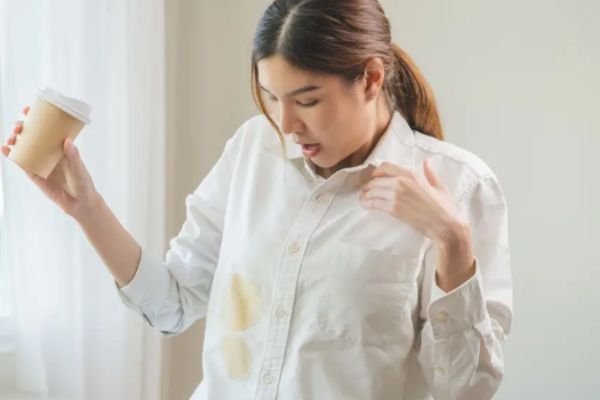
- Blot excess liquid immediately.
- Mix 1 tbsp dish soap, 1 tbsp white vinegar, and 2 cups warm water.
- Soak the stain for 15 minutes, then rinse. For older stains, apply baking soda paste (baking soda + water) before washing.
2. Red Wine Stains
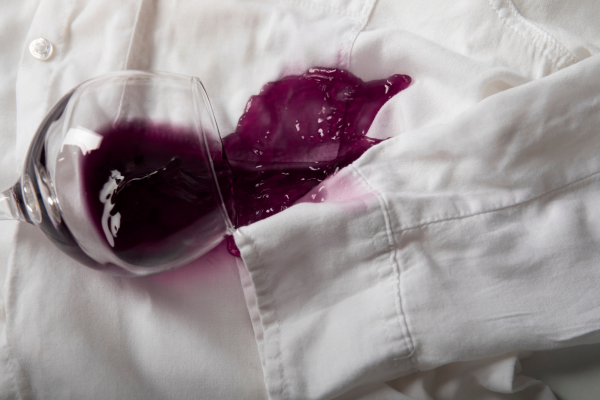
- Sprinkle salt on the stain to absorb moisture.
- Blot with a cloth dipped in a mix of 3 parts hydrogen peroxide and 1 part dish soap.
- Rinse with cold water and repeat if necessary.
3. Grease or Oil Stains

- Cover the stain with cornstarch or baby powder to absorb oil. Let sit for 15 minutes.
- Scrape off the powder, then apply dish soap directly.
- Wash in hot water (if the fabric allows).
Body-Related Stains
1. Sweat Stains
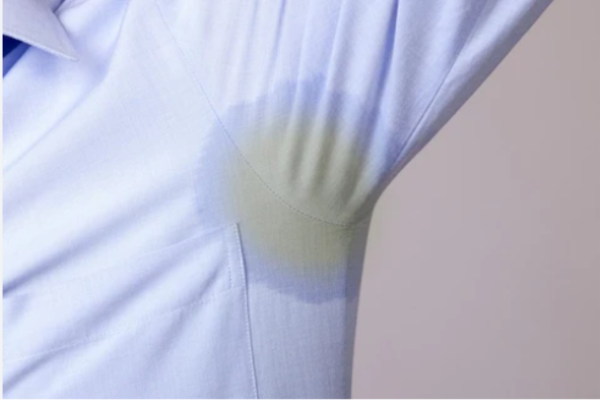
- Create a paste of baking soda and water. Scrub into the stain.
- Soak the garment in white vinegar for 30 minutes before washing.
- For yellowed underarms, rub lemon juice on the area and sun-dry to bleach naturally.
2. Black Dotted Sweat Stains
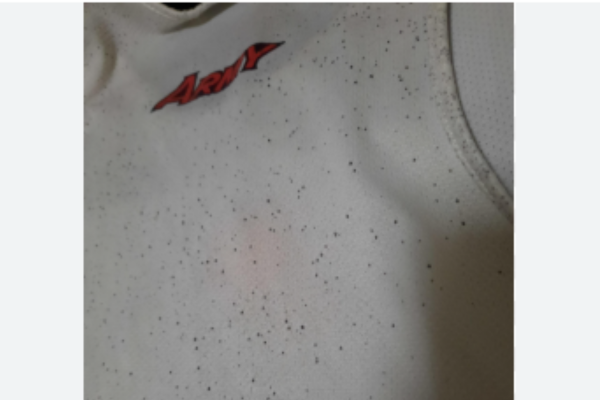
Black dotted sweat stains, often caused by a combination of sweat, deodorant, and fabric reactions, can be particularly stubborn. Here’s how to remove them:
- Step 1: Scrape Off Residue
Use a dull knife or spoon to gently scrape off any dried deodorant or sweat residue. - Step 2: Pre-Treat with Vinegar
Mix equal parts white vinegar and water. Apply the solution to the stain and let it sit for 15-20 minutes. Vinegar helps break down the alkaline compounds in sweat and deodorant. - Step 3: Apply Baking Soda Paste
Make a thick paste of baking soda and water. Gently scrub the paste into the stain using a soft toothbrush. Baking soda neutralizes odors and lifts stains. - Step 4: Rinse and Wash
Rinse the treated area with cold water, then wash the garment in the hottest water safe for the fabric. Add 1 cup of white vinegar to the rinse cycle to ensure all residues are removed. - Step 5: Sun-Dry
Sunlight is a natural bleach and disinfectant. Hang the garment outside to dry, as UV rays can help eliminate any remaining discoloration.
3. Blood Stains
- Soak in cold water (hot water sets proteins in blood).
- Apply hydrogen peroxide directly, then rinse. For dried blood, use an enzyme-based detergent.
4. Makeup or Lipstick Stains
- Scrape off excess makeup with a butter knife.
- Dab rubbing alcohol on the stain (test on hidden areas first), then rinse.
- Wash with detergent and oxygen bleach.
Outdoor and Miscellaneous Stains
1. Grass Stains
- Rub the stain with white vinegar or dish soap.
- Soak in a mix of oxygen bleach and water for 30 minutes before washing.
2. Ink Stains
- Spritz hairspray or rubbing alcohol on the stain to break down pigments.
- Blot with a cotton ball, then rinse. Repeat until the ink lifts.
3. Mud Stains
- Let the mud dry completely, then brush off excess.
- Soak in a solution of enzyme detergent and cold water for 1 hour before washing.
Special Considerations for Different Fabrics
1. Delicate Fabrics (Silk, Wool)
- Avoid harsh chemicals. Use mild soap and cold water.
- Blot gently and air-dry flat.
2. Denim
- Turn jeans inside out to preserve color.
- Use baking soda or vinegar to lift stains without fading.
3. Synthetic Fabrics (Polyester, Nylon)
- Test hydrogen peroxide on hidden seams first.
- Avoid high heat, which can melt fibers.
Pro Tips for Preventing Stains
- Pre-Treat High-Risk Clothing
Spray collars and cuffs with a stain repellent. - Wear Aprons or Overalls
Protect clothes during cooking or messy activities. - Change Immediately
Remove stained clothing before the mark sets. - Regular Laundry Maintenance
Clean your washing machine monthly to avoid residue transfer.
Conclusion: Mastering the Art of Stain Removal
Removing stains requires a combination of science and patience. By understanding the nature of stains, using the right tools, and acting swiftly, you can extend the life of your garments and keep them looking pristine. Whether you’re dealing with black dotted sweat stains, food spills, or outdoor messes, this guide equips you with the knowledge to tackle them all. Remember: no single method works for every stain, so experiment cautiously and always prioritize fabric care. With this guide in hand, you’re ready to face everything from spaghetti sauce splatters to grass-streaked knees—confidence intact!
References
https://www.cleaninginstitute.org/cleaning-tips/clothes/stain-removal-guide
https://www.quora.com/What-is-the-best-way-to-clean-a-stain-on-clothing
https://www.quora.com/What-is-the-best-way-to-clean-a-stain-on-clothing

